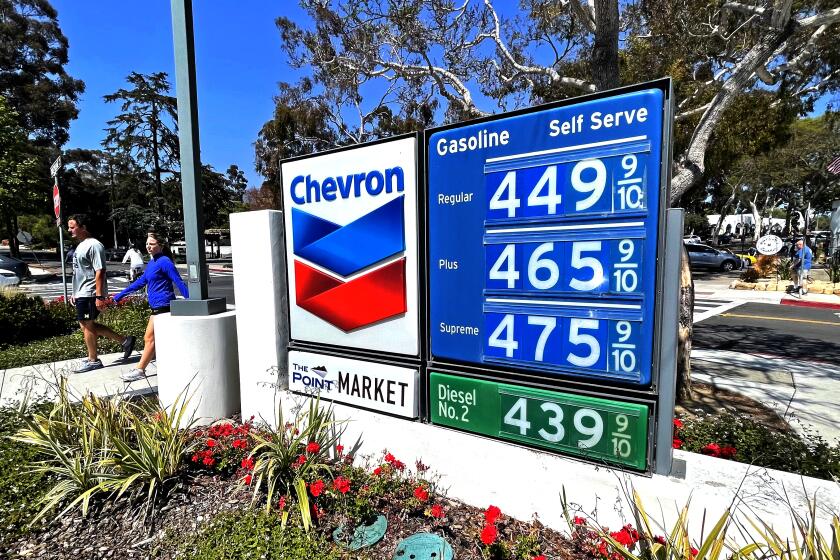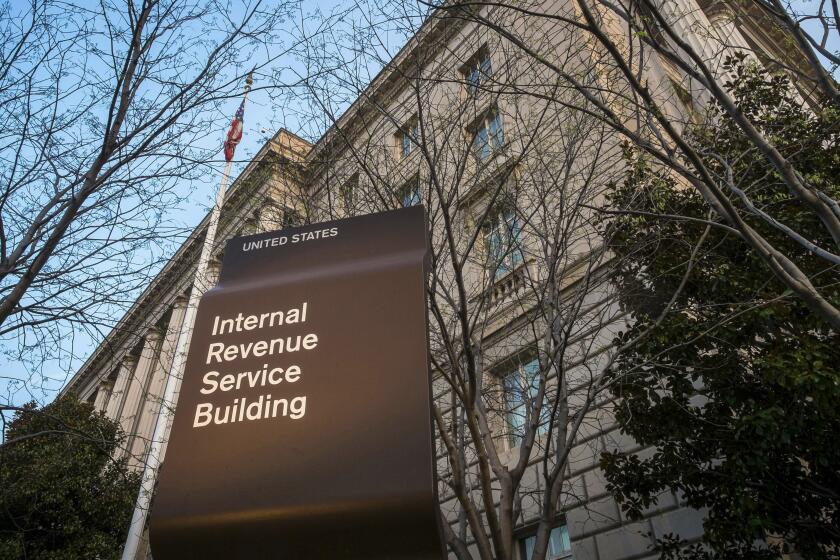What’s behind California’s painful gas prices? Oil, taxes and geopolitics

Anyone who’s filled up a car in recent months knows that gas prices are crazy high. And it’s no secret that prices in California are well above those in the rest of the country — the current average price in California, about $4.75 per gallon, is about $1.20 more than Wednesday’s U.S. average, according to AAA.
And prices are expected to go up some more before they go down, the U.S. Energy Information Administration projects. The pain isn’t ours alone; it’s being felt globally as gasoline prices rebound from the pandemic-induced slump in 2020. But that’s little comfort for Californians shocked by record prices at the pump.
What’s behind all this? To a large degree, it’s the same force that’s pushing California housing prices into the stratosphere: Demand has been outstripping supply for some time now. In the case of gasoline, that’s a function not just of COVID-related production problems but also our growing consumption of masks, COVID test kits and plastic packaging.
There are extra costs imposed by California’s policies and markets too. Throw in stiff sanctions on Russian oil exports, and that’s a recipe for even more expensive gasoline.
Here’s a breakdown of why gas prices are so high.
Oil prices
Gasoline is one of many products made from crude oil, which is bought and sold on markets that are global in scope. The buyers typically are refiners that convert the crude into products for consumers or industrial users, including transportation fuels, propane, ammonia and the feedstocks used in some plastic goods.
One factor in the current doldrums is flagging crude oil production, which started falling in 2019, the U.S. Energy Information Administration reported. Although it’s expected to return to its pre-pandemic level this year, that’s not going to be enough to sate the growing demand.
Will gas and food prices continue to rise? How might the conflict in Eastern Europe affect Silicon Valley and Hollywood?
What happened to production? Geopolitics played a key role at first, in the form of U.S. sanctions on oil exports from Iran and Venezuela and a decision by OPEC nations to cut production. Then the pandemic hit, and the sharp drop in demand for motor fuels led producers around the world to pull back.
Since then, consumption of crude oil has rebounded, although the demand for motor fuels hasn’t. Production, meanwhile, has increased at a slower pace, in part because of operational problems and in part because of decisions by OPEC to hold down supplies and keep prices high.
The American Petroleum Institute, a trade association for the U.S. oil and gas industry, reported that the U.S. demand for petroleum in January was the highest for that month since 1963. While the demand for gasoline and jet fuel remained below their pre-pandemic levels, the demand for petrochemicals used in products such as medical plastics and packaging materials rose to the highest level since 1965, making up almost one-third of crude sales. The demand for truck fuel was significantly higher than its pre-pandemic level as well.
This shift reflects a lingering effect of the pandemic. It’s not just the millions of COVID test kits and other medical products made from petrochemicals. It’s the mountain of packaging materials being used to support our prodigious online shopping habit, as well as the fleets of trucks needed to deliver those goods.
Several hundred people gathered Wednesday morning in the Mojave Desert to send off a group of truckers driving cross-country to protest COVID-19 mandates.
The gap between production and consumption has caused the United States — still the world’s leading source of crude oil — to import more than it produces, said Dean Foreman, chief economist for the petroleum institute. It has also led refiners to draw down their inventories, he said. Those three conditions — reduced production, higher imports and thinner inventories — have historically translated to higher gas prices, Foreman said.
The supply of both crude oil and refined fuels could take a significant hit as the Ukraine crisis deepens. Russia is the world’s second-largest contributor in both categories. It accounts for about one-sixth of the crude and refined petroleum products on the market, Foreman said.
Although Europe is a much bigger consumer of Russian oil than the U.S. is, Foreman said, sanctions on Russia’s output would ripple through the global market. “Any significant disruption to that would have to be made up somewhere else,” he said, adding that the already tight market would have trouble finding a replacement.
Translation: More pressure on prices.
The Energy Information Administration projected earlier this month that global oil supply and demand would come back into balance this year, with production exceeding demand in 2023. That would lead to crude oil prices falling slightly this year and more next year. But even then, the EIA predicts, crude prices in the U.S. would remain more than 60% higher than they were in 2020. And the agency’s projections didn’t factor in the fallout from Russia’s invasion of Ukraine.
The price of crude oil is the single biggest component of gasoline costs, representing 43% of the price per gallon, the EIA estimated. Notably, a 2014 study by the Federal Reserve Bank of St. Louis showed that pump prices rose quickly when crude prices went up, but they took a more leisurely path down when crude prices fell.
Totally Worth It
Be your money's boss! Learn how to make a budget and take control of your finances with this eight-week newsletter course.
You may occasionally receive promotional content from the Los Angeles Times.
California taxes and policies
But while crude prices and the gap between supply and demand account for the rise in U.S. gas prices, they don’t explain why Californians pay more than residents of other states. Californians were paying $4.75 a gallon on Wednesday, according to AAA’s daily average. We were joined in the $4 club by Hawaii, at $4.53. Every other state was under $4.
California’s premium stems from the state’s environmental laws and its taxes on motor fuels, as well as the special blend of gasoline required in the warmer months.
California’s environmental rules require refiners to follow specific gasoline formulas designed to reduce air pollution when the temperature is high. In particular, the reformulated gasoline is less volatile and contributes less to the state’s smog problem. As a result, the California Air Resources Board says, gasoline prices differ from winter to summer.
By the Western States Petroleum Assn.’s calculation, California state policies increased the price of gasoline here by $1.27 per gallon at the end of January. Almost two-thirds of that amount came from the state’s 51-cent excise tax and its 2.25% sales tax on motor fuels. The rest represented the cost of the state’s Low Carbon Fuel Standard and its cap-and-trade program to reduce carbon emissions.
The cost of the fuel standard and the cap-and-trade program are dictated by market forces, but they haven’t gone up as sharply as crude oil prices have. Instead, the cost per gallon is about 8 cents higher now than it was last May, the Western States Petroleum Assn. said.
According to the Legislative Analyst’s Office, the state excise tax is charged to gasoline suppliers before they deliver gasoline to retail stations. However, that tax is passed along to drivers through higher prices at the pump.
California drivers also have to pay a federal excise tax on gasoline, which is similarly charged to suppliers and felt at the pump. But so do drivers in other states.
Has a payment app recently asked you to verify your tax info? It’s part of a new effort to catch tax cheats. Here’s what you need to know.
More to Read
Inside the business of entertainment
The Wide Shot brings you news, analysis and insights on everything from streaming wars to production — and what it all means for the future.
You may occasionally receive promotional content from the Los Angeles Times.















